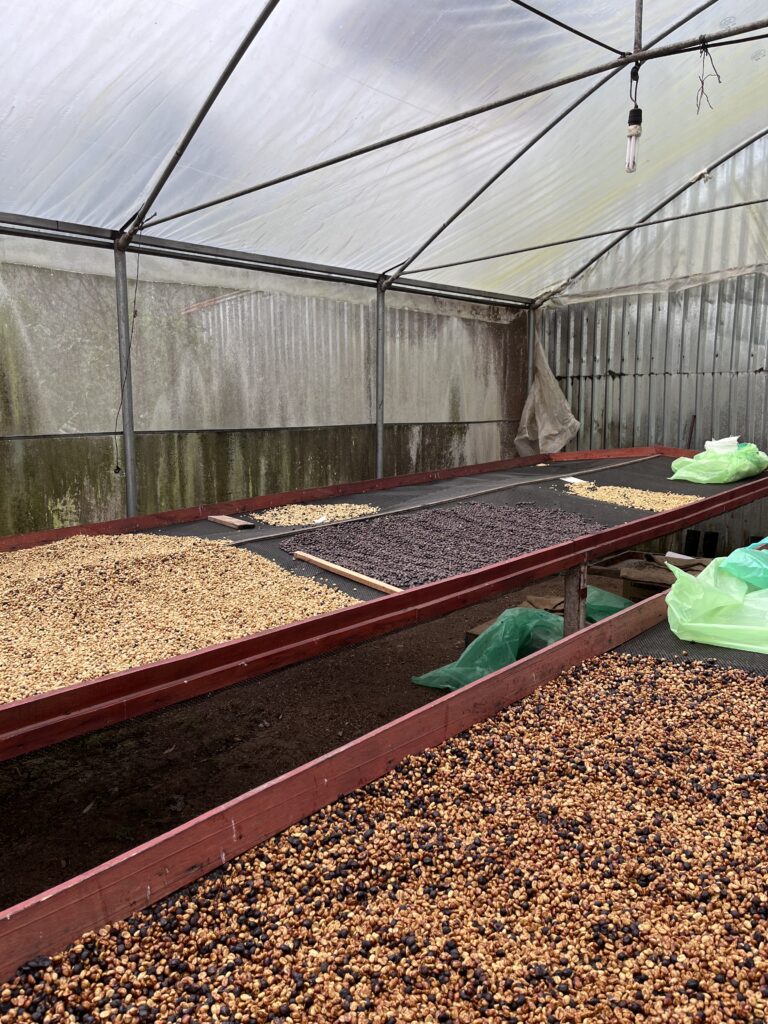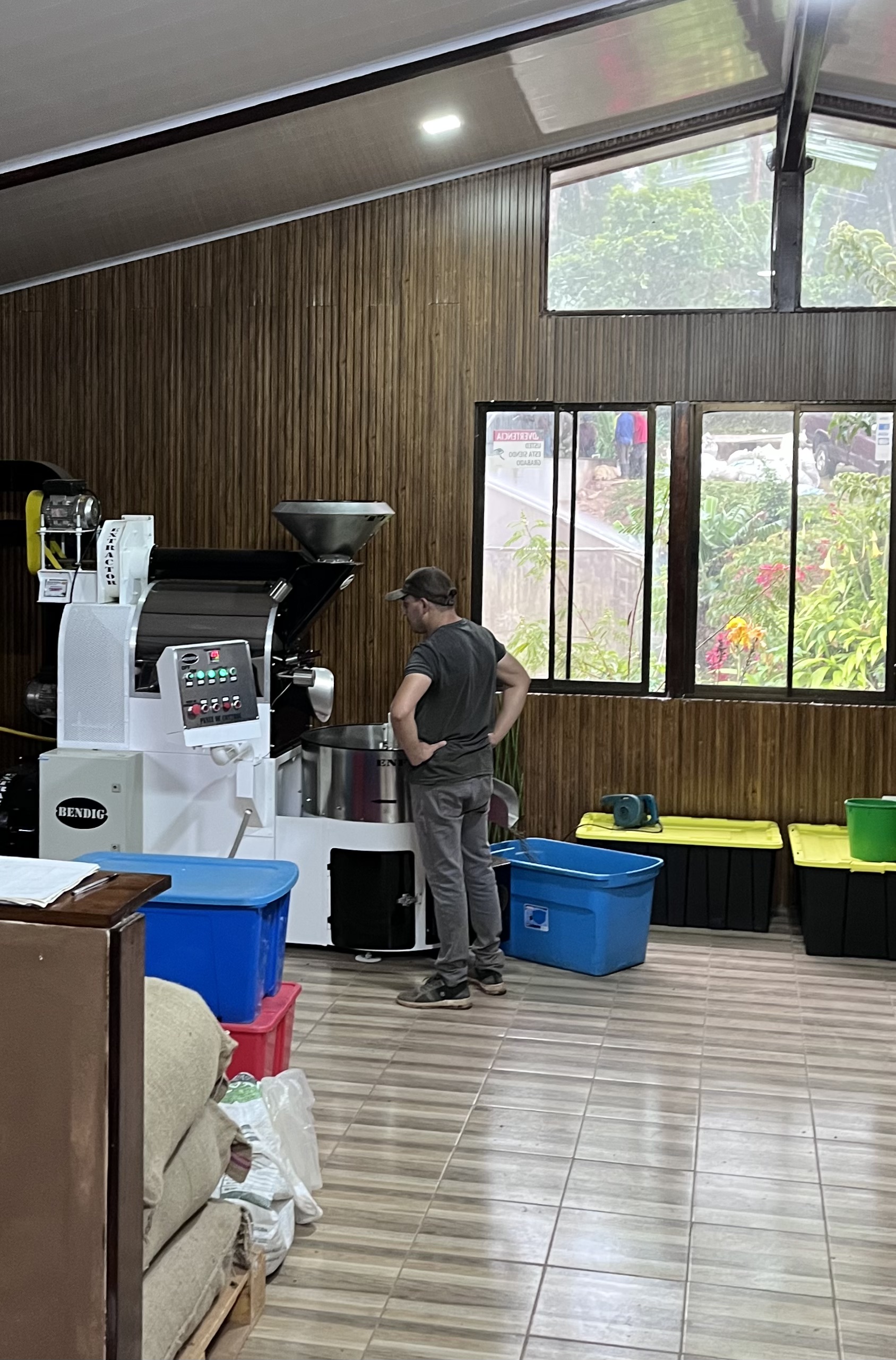A Visit in the Rain
My February visit to Sol Naciente will likely remain memorable not just for the insights gained, but for an adventure that perfectly illustrates the spirit of Costa Rica’s coffee community. While discussing the farm’s operations with Jimmy Bonilla Martinez, the skies opened up. The rain transformed the already steep approach to the farm into a challenging obstacle course. In what proved to be an overly optimistic decision, I attempted the ascent in our small 4×4. We nearly made it to the top before the engine protested the climb and gave up, leaving us stranded diagonally across the hillside.
Don Arturo’s response to our predicament exemplified the resourcefulness I’ve come to associate with Costa Rican coffee producers. One look at our situation, a quick phone call to a friend with a more capable vehicle, and our problem was solved. This spirit of community and problem-solving seems deeply ingrained in the local coffee culture.
Innovation at Cafe Sol Naciente


The real purpose of my visit was to discuss the farm’s operations with Jimmy, who oversees both administration and the roasting and packaging operations. Like many progressive coffee farms, Sol Naciente is actively adapting to changing times. While Catuai and Geisha varieties form the backbone of their production – with 70% destined for export – they’re not resting on tradition alone.
The farm’s experimental plots with varieties like Casiopea and Java are showing promising results. These trials serve a dual purpose: preparing for the challenges of climate change while also expanding their offering to discerning clients. It’s a forward-thinking approach that acknowledges both environmental realities and market opportunities.
Facing Climate Challenges
The reality of climate change isn’t theoretical at Sol Naciente – it’s reflected in their production figures, which have been declining over the past four years. Their response has been strategic: focusing on quality over quantity. This shift is complemented by their unique controlled fermentation process, a Sol Naciente innovation that adds another layer of distinction to their coffee.
From Farm to Cup
One of the most interesting aspects of Sol Naciente’s operation is their on-site roasting facility. When I asked Jimmy about the reasoning behind this addition, his explanation revealed multiple benefits. By roasting their own beans, they gain invaluable insight into their clients’ needs and challenges. It also creates a unique opportunity for visiting clients to experience the complete journey of coffee, from seedling to final roast, all at the source.
This complete vertical integration extends to their public outreach as well. The farm offers tours that include cupping sessions, part of an emerging trend among producers to connect directly with consumers. It’s a development worth watching, as it could reshape the traditional relationships between producers, roasters, and coffee enthusiasts.
As I prepare for my return visit in April, I’m eager to see how their various projects have progressed. I’m looking forward to collecting samples to share back in Germany. But more than that, I’m curious to see what new innovations this forward-thinking finca might have developed in the meantime.
This is part of an ongoing series exploring coffee fincas and their approaches to production, innovation, and sustainability in the face of changing times.
